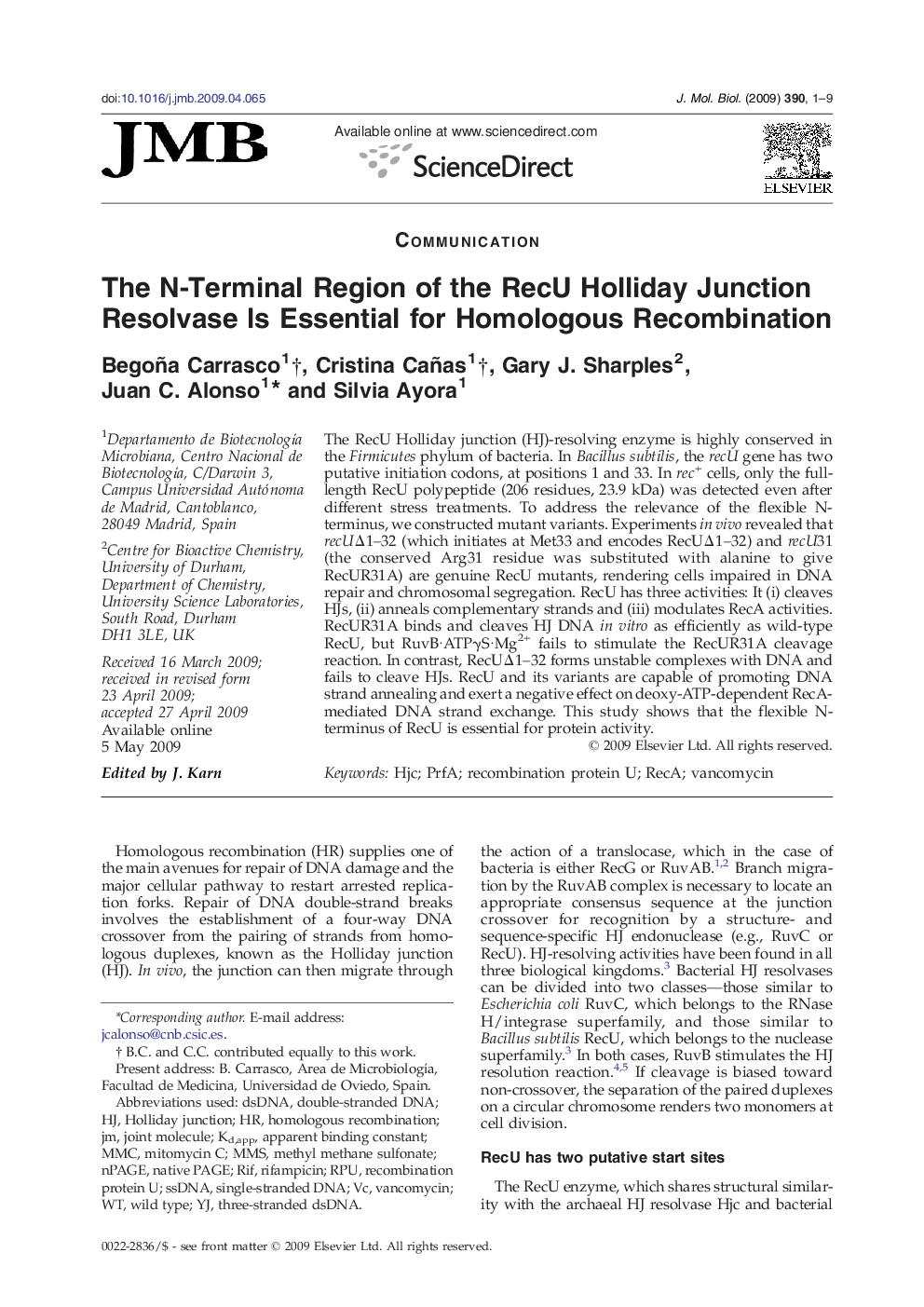| Article ID | Journal | Published Year | Pages | File Type |
|---|---|---|---|---|
| 2186624 | Journal of Molecular Biology | 2009 | 9 Pages |
The RecU Holliday junction (HJ)-resolving enzyme is highly conserved in the Firmicutes phylum of bacteria. In Bacillus subtilis, the recU gene has two putative initiation codons, at positions 1 and 33. In rec+ cells, only the full-length RecU polypeptide (206 residues, 23.9 kDa) was detected even after different stress treatments. To address the relevance of the flexible N-terminus, we constructed mutant variants. Experiments in vivo revealed that recUΔ1–32 (which initiates at Met33 and encodes RecUΔ1–32) and recU31 (the conserved Arg31 residue was substituted with alanine to give RecUR31A) are genuine RecU mutants, rendering cells impaired in DNA repair and chromosomal segregation. RecU has three activities: It (i) cleaves HJs, (ii) anneals complementary strands and (iii) modulates RecA activities. RecUR31A binds and cleaves HJ DNA in vitro as efficiently as wild-type RecU, but RuvB·ATPγS·Mg2+ fails to stimulate the RecUR31A cleavage reaction. In contrast, RecUΔ1–32 forms unstable complexes with DNA and fails to cleave HJs. RecU and its variants are capable of promoting DNA strand annealing and exert a negative effect on deoxy-ATP-dependent RecA-mediated DNA strand exchange. This study shows that the flexible N-terminus of RecU is essential for protein activity.
